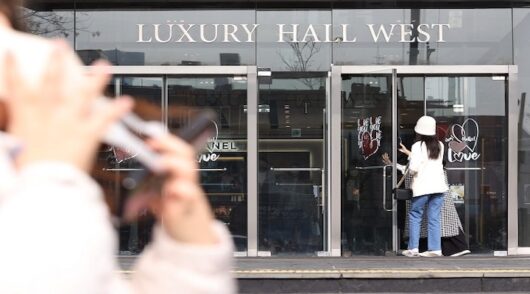Besides a surcharge for delivery, meals via Hong Kong food-order platforms are generally dearer than if bought as a takeaway at the restaurant, says the Consumer Council.
They’re also often delivered late, at the wrong temperature or in damaged condition…
In trial purchases from nine food-order platforms, the council found that more than 60 per cent of the meals ordered were more expensive than the restaurant takeaway, with price markups ranging from 3 to 86 per cent.
While the consumer watchdog issued details of its survey without naming names, the South China Morning Post has named and shamed.
It says that after noticing a growing number of complaints from consumers, the organisation tested the services of nine food-delivery apps: 51WM, Deliveroo, Foodpanda, Honestbee, Itacho Sushi, KFC, McDonald’s, Pizza Hut and UberEats.
The council received 22 complaints in the first 10 months of this year about food deliveries – about three times more than the same period last year – prompting its investigation.
It its trial, 12 of its orders made through 51WM and Honestbee were cancelled without notice, while another order through UberEats was voided after the service provider discovered the restaurant had actually closed down.
The biggest mark-up that testers came across was for a packet of sushi, which cost HK$200 if ordered through Deliveroo, but only HK$128 at the restaurant.
There was also considerable variation in punctuality and accuracy of the delivery service.
“Before ordering meals, consumers should first check the prices to assess if they are still willing to pay the extra cost just to have the food delivered,” says the council.
In its survey, in September, the council ordered meals from five aggregate platforms and four eatery-chain platforms a total of 91 times to evaluate the quality of their delivery service. The survey also considered ease of use, punctuality, the condition of the food when delivered, details of fees and charges, and adequacy of customer service. The chain platforms offer a delivery service covering a far wider geographical area while the aggregate platforms focus mainly on the commercial districts and serve mainly office workers.
Pizza Hut topped the delivery time rankings with an 88 per cent punctuality rate and an average delay of 5.5 minutes. Uber Eats fared worst with just 20 per cent of deliveries on time and an average delay of 18.3 minutes. Market leader Foodpanda had an on-time rate of 60 per cent – but that was better than both KFC and McDonald’s, both on just 50 per cent. Honestbee managed just 44 per cent.
Orders cancelled
Problems uncovered by the council included restaurants unilaterally cancelling orders, double-charging and delivery delays, the most serious being about 50 minutes. By the time meals arrive their condition is sometimes less than satisfactory.
In responses to consumer queries, the blame is shifted to the other party – the ordering platform, the partner restaurant or the delivery staff. The council says traders need to clearly delineate the respective parties’ responsibilities and be accountable for service improvement. If meals cannot be delivered promptly, customers should be notified, and a point of contact for inquiries should be available for immediate help.
All four eatery chains surveyed offer free meal delivery: three require a minimum spending to avoid a delivery charge while the other has a minimum consumption charge.
In the case of the five aggregate platforms, four levy a delivery charge of $20 while the other, depending on the restaurant, varies from free delivery to a charge of $150.
“Consumers should also be aware that food platforms may adjust the delivery charge according to the district and weather conditions,” says the council. It says some raised the charge to $35 for delivery to the Yuen Long district, while some charged $40 for inclement weather.
The council also warns that while aggregate platforms offer a variety of restaurants, each purchase order is confined to only one restaurant. Ordering food from more than one restaurant entails separate orders and extra delivery charges.
Prices marked up
Among the 137 food items the council ordered, 83 items (61 per cent) were found to be more expensive than if bought as a takeaway at the restaurant. The meals offered by three of the eatery chains all had their prices marked up, the council noting the case of a fast-food outlet’s $11 ice cream costing $20.50 when delivered – an increase of 86 per cent.
About half of the food (43 to 54 per cent) from four aggregate platforms, and 11 per cent from the other one, had price mark-ups ranging from 3 to 56 per cent. The council cites sushi priced $128 at the restaurant being charged at $200 through the platform, an increase of 56 per cent.
The survey found that in general eatery chains are more punctual. However, there was a wide variation in punctuality for aggregate platforms, with an average of 18.3 minutes’ delay.
Of a total of 91 meal orders, 78 were successful while 12 were cancelled by the restaurants. In one case, an order was not confirmed until two hours later. A follow-up inquiry found that the restaurant had actually gone out of business.
In the event of order errors, all platforms undertook to make a re-delivery or offered a refund, except for one that indicated it would need to contact the restaurant first. Some platforms, however, would only credit the refund into the customer’s account for their next purchase.
The survey also found none of the five aggregate platforms issued printed receipts or a sales memo upon delivery. Four would subsequently send an email or e-receipt, but the other would not issue any documentation.
Regarding food quality, 30 per cent of delivered meals were judged to be not ideal in terms of temperature, including pizza being cold, sushi becoming warm and ice cream melting. Another 30 per cent of deliveries had been spoiled through being toppled over.






